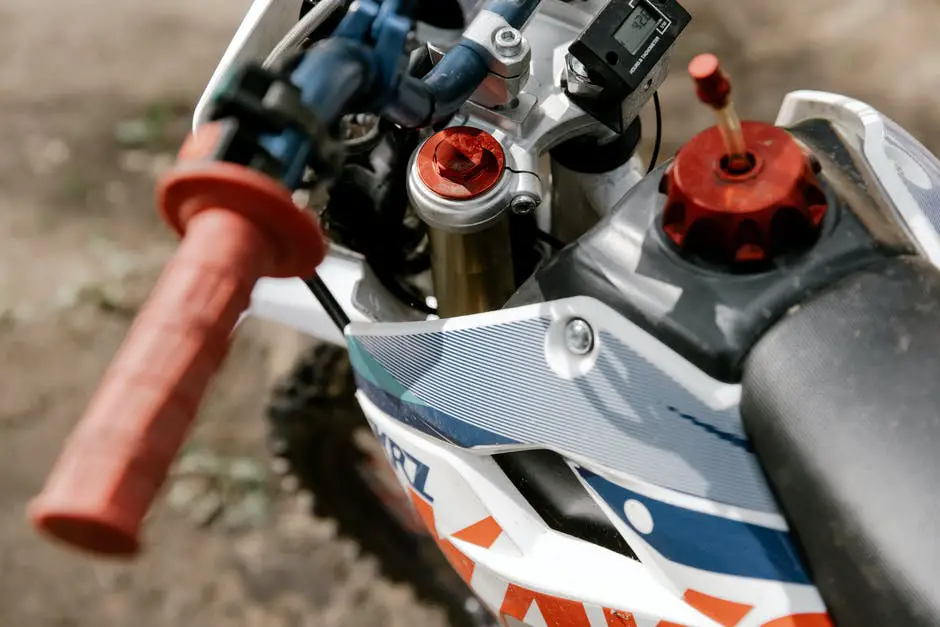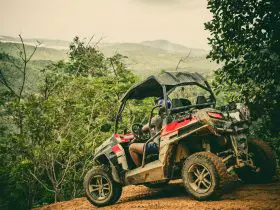Did you know that an average of 20,339 ATVs is reported stolen each year in the U.S.? That’s not a fun statistic to find out especially if you paid more than $5,000 for your new ATV.
A kill switch can be the answer to help you keep your ATV from getting stolen. More than that, a kill switch can protect you and your family when you use an ATV. In an emergency or when you lose control, you want to have some type of protection.
It’s especially useful when you have young kids that want to play with everything. You can protect them even when you’re not around.
A kill switch can save lives, but how does a kill switch work?
Before you sign yourself up for a kill switch, you probably want to learn everything you can about them. We’ve made that easy for you with our guide on everything you need to know about how a kill switch works.
Table of Contents
What Is a Kill Switch?
A kill switch is also known as an emergency stop or emergency power off. It’s a safety mechanism that can shut down your ATV, UTV, snowmobile, or bike in an emergency.
In most cases, you can use your key to properly turn off your bike. But if there’s an emergency where you need to immediately shut down your bike to protect yourself or someone else, then a kill switch comes in handy. It’s designed to be easy and noticeable, so when you’re panicked and worried, you can use the kill switch easily.
A kill switch is a common mechanism used in many different machines. They’re used in industrial machinery including nuclear power plants. You probably don’t know it but a kill switch is also used in gas station pumps to ensure that the pump doesn’t overflow and pump out large amounts of flammable gas.
The emergency button on your elevator is also a kill switch. Your treadmill also has a kill switch so if you stumble or fall, you can pull the red kill switch to immediately turn off the machine without causing you further injury.
You can rest assured that your amusement park rides have kill switches, so you’re always protected. The fact that you can go online and turn your phone off when it’s lost or stolen is another form of a kill switch.
Why Use a Kill Switch On an ATV, UTV, Snowmobile, or Bike?
A kill switch can be incredibly useful on an ATV, UTV, snowmobile, or bike. These vehicles are designed to be easy and convenient, but they can also be dangerous. You want to make sure that you and your family are protected when using these vehicles. You also want to protect your investment from theft.
Emergency Protection
The main reason that people get kill switches is to shut off the vehicle in an emergency. If you fall off or your ATV flips over, you want to shut down the vehicle before it gets away from you and hurts people. If your vehicle malfunctions, then the kill switch can be a lifesaver.
Remember there are other safety features you should also keep in mind. Protective equipment like gloves, pants, and boots can also help you. Also, some states have ATV helmet laws that require that you wear a helmet when driving.
Safety of Young Children
Your kids might run around playing with everything in sight, but you want to make sure that they can’t hurt themselves on your ATV, UTV, snowmobile, or bike. A kill switch allows you to protect them.
If they’re old enough, you might want to teach them how to ride on a little ATV or minibike. To protect them from hitting things and hurting themselves, you can use a remote kill switch. When you think they’re going to crash, just hit that kill switch and the vehicle will die and come to a stop.
Protection From Theft
One important reason to install a kill switch is to reduce your risk of vehicle theft. If you do, you can rest assured that you are the only person who knows where the switch is and how to operate it.
You spend a lot of money on your ATV, UTV, snowmobile, and bike and you want to make sure you protect your investment. The price of an ATV can range from $3,000 to $15,000+ with an average price of $7,000.
Remember that they can still haul that ATV on a truck, but at least they won’t be able to simply ride it out. Without a kill switch, they can simply get on the ATV, UTV, snowmobile, or bike and drive it away.
In most cases, your ATV thief is not going to be a specialized professional with all the tools of the trade. It’s just a matter of convenience for them. So, making it even a little bit difficult can reduce your risk of getting your ATV stolen. Check out other ways to protect your ATV from theft.
Insurance Discount
There’s another perk that you probably aren’t aware of is a discount on your insurance. Some insurance companies offer you a discount if your vehicle has a kill switch. Ask your insurance company if they have this offer and how much of a discount they can give.
How Does a Kill Switch Work?
A kill switch is wired into the ignition coil. An ignition coil sends a spark that ignites the engine. The kill switch breaks the ground circuit, which means that the ignition coil will not work. It won’t send a spark to the engine and the vehicle won’t work.
A kill switch can be either Normally Open (NO) or Normally Closed (NC). The NO kill switch grounds the primary ignition when it’s pulled. This leads to a short circuit that stops the engine.
In an NC switch, the circuit is always connected. When you push the kill switch, the circuit breaks and the engine stops working. This is usually used in battery-powered ATVs.
What Are the Different Types of Kill Switches?
A kill switch can be a push-button, a pull switch, or a remote kill switch. You can either push a button to kill your vehicle or pull the cord to make sure the kill switch is on.
A push kill switch is usually located on the handlebar in a bright red color so you can always tell where it is. This means you or any passerby will always know what it is and where it is.
A pull kill switch is useful for competitive racers because they can simply pull the switch to stop the engine. If the driver falls out of the vehicle, a wire is connected to their chest plate or wrist. That wire pulls the kill switch turning the engine off.
A remote kill switch is best if you’re a parent teaching your kids to drive a small ATV or minibike. These small ATVs usually come with a kill switch and a remote kill switch.
Kill Switch vs Key
Some riders use the kill switch instead of a key to turn their vehicles off. It becomes second nature for them to press the kill switch to turn off their bike or ATV.
At the end of the day, the kill switch and key ignition switch are part of the same circuit. You still want to make sure your ignition is off, otherwise, your battery will die. You can decide what works best for you in different situations.
How to Install a Kill Switch?
Usually, you want to install your kill switch on your handlebars so you can get to it easily in times of emergency. Also, thieves will see the kill switch immediately and it may make them change their mind about stealing your vehicle. You want to remember to make sure it’s out of the way, but you can still reach it easily.
Kill switches tend to be universal so they should work with almost any ATV. The wiring in the ATV may be different, so if you’re not sure consult an expert.
You should have three wires. The short wire is connected to the ground. The long wire is connected to the signal wire on the ATV engine. The third wire is the tether wire which activated the kill switch when pulled.
Remember to test your kill switch while the ATV is running.
Check Out More Tips and Tricks on ATV Riding
How does a kill switch work? You asked the question, and we gave you the answer. Now you know everything you need to about kill switches. You know all the reasons to get a kill switch and the different types of kill switches.
If you’re just starting or an avid rider, you probably still have a lot of questions on your mind. Maybe you want to learn about ATV tire pressure or ATV fuel economy. Check out our blog for more articles that answer all your questions about ATV riding like learning how to negotiate with ATV dealers.










